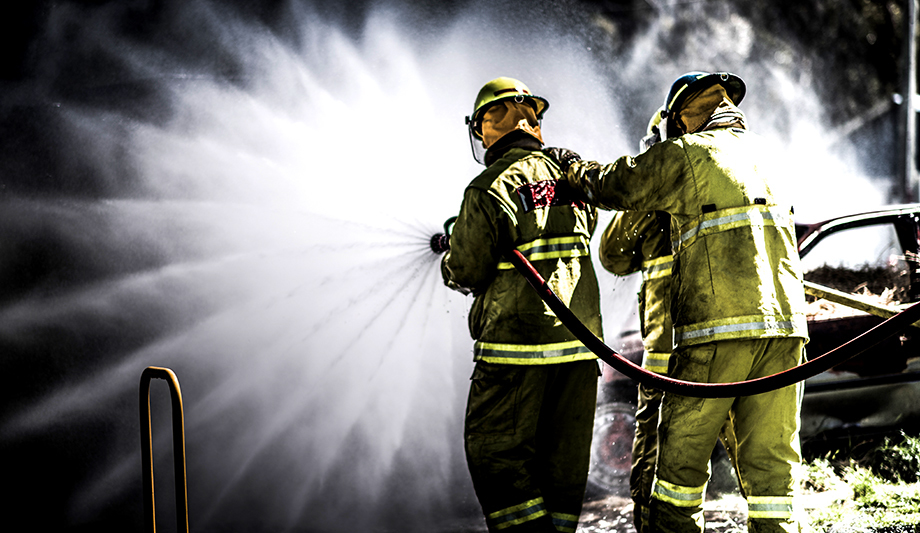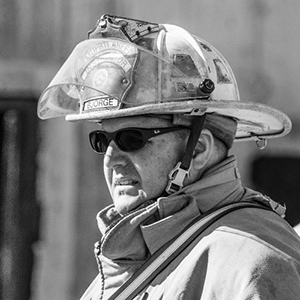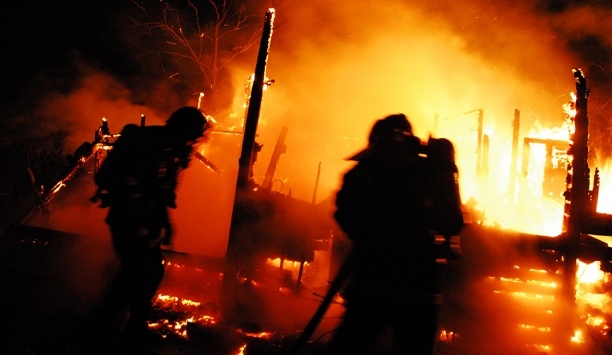Want to know an easy way to judge the quality of a fire department? Look at how much they train. Career, volunteer or combination, fire departments become successful through training.
Yet all training is not equal. Focus too much on hands-on training (HOT) and you could be missing important legal and compliance updates. Lean heavily on web-based training and you may fail to identify shortcomings in skills proficiencies. Keep students confined to a classroom and you may lose their interest quickly. Not surprisingly, a balance of all three types of training is needed to produce competent, empowered firefighters.
For this article, I was challenged to think about what’s missing from our current fire training programs. As I thought about the varied way we approach fire training, three issues jumped out at me.
- Base training on facts and statistics
- Take advantage of new technologies
- Incorporate policy into your training
 |
| Your training program should also be strong in the types of calls you respond to most |
Base Training On Facts And Statistics
If your department has a robust training program, outlined by a calendar of various topics and employing a mix of HOT, online and classroom training, you’re ahead of the curve. But even in departments with well-developed training programs, training is often based on preference or habit, not data.
Think about the topics in your training program. Do you know why they’re included? Do they match your call make-up? Are they targeting specific skill shortcomings? (And yes, we all have them!)What’s missing from many fire department training programs is a detailed needs assessment
What’s missing from many fire department training programs is a detailed needs assessment that in turn establishes a factual basis for the year’s training topics. The needs assessment should include:
- Surveying the members to determine the types of training they want or feel they need.
- Measuring firefighter proficiency on basic tasks, such as NFPA 1403 drills, NFPA 1710 drills and EMS patient assessment skills audits, to assess personnel by mandate or by industry best practice. This will identify skills deficiencies to address through training.
- Incorporating call volume statistics and details. A significant percentage of the calls fire departments respond to are EMS and vehicle extrication But I’d venture to guess the training programs of most departments don’t match those percentages. Yes, you need to train for the high-risk, low-frequency tasks. But your training program should also be strong in the types of calls you respond to most.
Incorporating these “facts and stats” into your training program will help you keep it fresh, relevant and interesting.
 |
| Firefighters can use their phones and tablets to access department training information and complete training assignments |
Take Advantage Of New Technologies
There is something to be said for back-to-the-basics, keep-it-simple firefighter training. But it’s a mistake to ignore technological advances. From teaching safe apparatus backing procedures to practicing hoseline deployment and Vent/Enter/Isolate/Search (VEIS) tactics, instructors have more options than ever before.
Some instructors regard simulators as second-rate to “the real thing.” Certainly, simulation and other forms of technology-driven instruction can’t replace the value of hands-on experience. But they can augment it in important ways.
Driver simulators, for example, not only save money because apparatus don’t have to be taken out of service or sustain wear and tear; they also provide an environment where firefighters can learn without risk of injury. If sitting behind a computer isn’t your kind of thing, live-burn simulators, vehicle fire simulators and hazmat simulators are available—and they all significantly boost training efficiency.Technology will never replace hands-on instruction, but it can facilitate it
But you don’t need fancy simulators to incorporate technology into your fire training program. Learning management systems (LMS) are another important tool that can increase training program efficiency. Although they’ve been around for a long time, LMS continue to improve.
The ability to integrate with mobile devices is huge, allowing firefighters to use their phones and tablets to access department training information and complete training assignments. Leveraging this technology can allow you to more efficiently manage information, schedule training and free up valuable time needed for other important tasks.
If you’ve attended some of the larger regional or national fire conferences recently, you may have had the opportunity to see audience response technology in action. By capturing the firefighters’ responses to questions in real-time, instructors can adjust the material to reflect students’ knowledge level. Audience response is also simply a great way to keep firefighters engaged.
Technology will never replace hands-on instruction, but it can facilitate it. If you’re using training methods that haven’t changed in decades, something’s missing from your training program.
 |
| Without incorporating policy into your training, you’re only giving your firefighters half the equation |
Incorporate Policy Into Your Training
I saved the biggest and best for last. When I work with fire departments across the country, I repeatedly discover the failure to incorporate policy into training.
Think about it: Training curricula are almost always designed around procedures—the how of doing something. But isn’t the why just as important? And that’s what policy is all about. Without incorporating policy into your training, you’re only giving your firefighters half the equation.Inevitably firefighters will encounter times when following the procedure isn’t possible
Inevitably firefighters will encounter times when following the procedure isn’t possible. That’s when policy training kicks in—firefighters understand the fundamental objective, and they can think on their feet about how to achieve it.
Training on policy also helps departments address the issues that so often get firefighters into trouble. How many of your firefighters really understand your department’s social media policy? What about the rules surrounding sick time usage? These are things that trip up firefighters time and time again. If you’re not training on policies, it’s unlikely firefighters remember them.
 |
| How many of your firefighters really understand your department’s social media policy? |
In addition, normalization of deviance is a risk to every organization. When personnel fail to follow policies and no negative repercussions result, it can quickly establish a new normal. Policy-based training resets the “normal” and makes sure that members of the organization comply with the policy and not what they think the policy says.Most line-of-duty death reports cite failure to comply with policy or lack of adequate policy
Fire instructors often avoid training on policy because they regard it as boring or unrelated to what really matters—firefighter safety and survival. Yet most line-of-duty death reports cite failure to comply with policy or lack of adequate policy as contributing factors in the incident.
If you’re worried that policy will make your training program dry and uninteresting, link it to real-world events. An online search provides lots of examples of when things went wrong and how adherence to policy might have produced a different outcome. And limit policy training to small chunks. Take out a 10-page policy and go through it line by line, and your students’ eyes will glaze over in seconds. Instead, look for ways to enrich your current training by bringing relevant pieces of policy into it. Your firefighters will be learning the department’s policies without even realizing it!
Focus On Continuous Improvement
Fire chiefs and fire instructors have a challenging job. Budgets are tight, and training is often one of the first things to be cut. Yet we need firefighters to be proficient in all-hazards response. Every department has a long training wish list. But if we focus on continuous quality improvement, we can get a little better each year. Looking for opportunities to incorporate statistics, technology and policy into our training is a good place to start.


















